CrossLock Ransomware is a notorious data-locker virus designed to encrypt data on the targeted PC. It demands ransom for the decryption of files after encrypting them. In our research, we found that this malware is an independent threat with no ties to any ransomware families.
You can identify this threat by the “.crlk” extension at the end of the filenames. For an instance, if a file named “1.jpg” gets encrypted, it would become “1.jpg.crlk”. Upon file encryption, this virus leaves the ransom message “READ_THIS.txt” to demand money for the decryptor. Read this guide to know how to remove CrossLock Ransomware and restore your files.
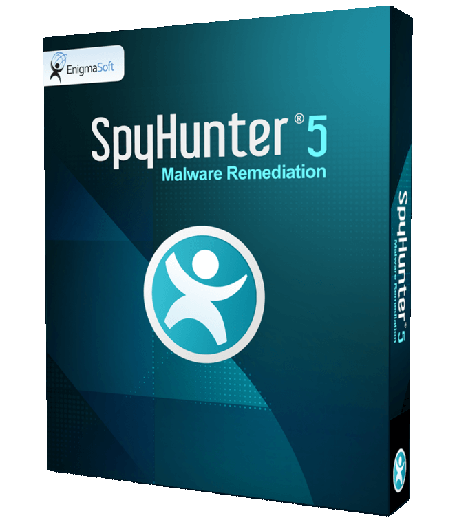
Threats like CrossLock Ransomware keep getting back on the PC if all associated files are not removed. So you are advised to use a powerful Malware Removal Tool to run a thorough scan of your PC and delete all threats at once.
Compatible with: Windows 11/10/8/7 (32 Bit and 64 Bit)
What is CrossLock Ransomware?
CrossLock Ransomware is a very violent and nasty computer malware. It is a disastrous PC threat that belongs to the fie-encrypting virus community. It can intrude any Windows machine including XP, Vista, 7, 8, 10, and the latest Windows 11. Once inside your computer, CrossLock Ransomware can conduct endless malignant activities that will downgrade your system performance. This notorious malware virus can easily alter your computer settings and disable your security-related programs.
This CrossLock Ransomware can encrypt all your data using a powerful encryption algorithm and make them inaccessible. It will also add its own extension to the end of all your file names to mark them encrypted. Upon successful encoding of your data, it will also leave a ransom note on your computer to explain the decryption method and demand ransom money. Whenever you will try to open your files, CrossLock Ransomware will show an error message and ask you to pay the ransom to get the decryption code.
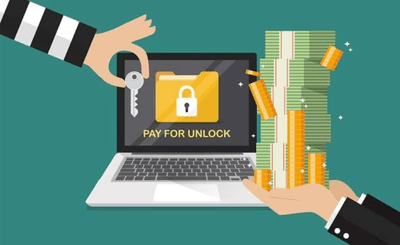
When you will open the ransom note left by CrossLock Ransomware, you will find out that your data is encrypted to cheat money from you. Hackers behind this infection will ask that your files are encrypted through a powerful algorithm and can only be unlocked through a private decryption key generated for your system. You will be asked to contact the hackers about the ransom amount and proof of decryption code. They may offer to decrypt some of your files for free to show that your files can get recovered once you pay the extortion fee and buy the decryption code.
Ransomware in general
Ransomware creators often demand payment in BitCoin or some other cryptocurrency because they could not be traced. They will also give you some time for transferring the money and threatens to delete your files or the decryption key if you don’t pay within the given time period.
It is all an elaborate plan of hackers to scare them and force them into paying ransom money without looking for any other option to recover their data. Makers of CrossLock or any other ransomware do not care about your files and they might not even reply to you after getting the money.
CrossLock Ransomware spread through different tricks
CrossLock Ransomware is a dangerous malware that mostly spread through spam emails with malicious attachments. Your system could also get infected by this virus when you download freeware programs, cracked software, or illegal patches from low-quality websites. This dubious threat could also slip into your machine when you visit porn or torrent websites on regular basis. Misleading ads that redirect your browser to shady websites could also result in the download of CrossLock Ransomware on your computer because hackers often use those phishing sites to spread malware.
You should always be careful while using the Internet because it is full of crooks who are looking to violate other people’s privacy and make illegal profits by any means necessary. This CrossLock Ransomware is a dangerous threat that is designed to force users into paying money for getting access to their own files. It is a very cruel and illegal process which is why you should not compromise with hackers so that they will not think of doing this again.
CrossLock Ransomware: Threat Analysis
| Name | CrossLock Ransomware |
| Type | Ransomware, File-Encrypting virus |
| Threat Level | High (Encrypt all your data and Restrict access to your files). |
| Symptoms | Victims cannot access any files on their PC and find Ransom notes asking for money. |
| Damage | CrossLock Ransomware will encrypt your data by adding the “.crlk” extension to file names and demand ransom money for the decryption key |
| Distribution | It is mainly distributed through spam emails, bundled freeware, porn, or torrent sites. |
| Removal | Download SpyHunter 5 Anti-Malware |
| File Recovery | Download Data Recovery Software |
Is Data Recovery possible?
Recovering files encrypted by CrossLock Ransomware could be very tricky but you don’t need to pay hefty ransom money to hackers. You can use your recent backup files to restore your data but for that, you will need to remove this infection or it will keep encrypting your files. If you don’t have any backup then you can use data recovery software which is also a very good option.
You can also store your CrossLock Ransomware encrypted files on any cloud server and wait for any free decryptor to be released so that you can recover your files without paying ransom fees. Reinstalling the Windows or formatting your computer will eliminate any chances of recovering your files, so don’t do it instead use a powerful anti-malware application to remove this infection completely from your system. You are advised to follow the below guide to permanently remove CrossLock Ransomware and recover your files safely.
Removal Tips for CrossLock Ransomware infection
Now, the first thing you need to know is to remove CrossLock Ransomware from your computer. It is not an easy task to delete the file-encrypting malware from an infected PC. This kind of threat normally tends to create several malicious copies of its source file at different locations. It can also modify windows registry entries and host files to get back automatically on the system. You should combine the Manual and Automatic Removal processes to get rid of this infection completely. We have created a detailed guide for you that can help you in the removal process. Using Anti-Malware Software is the best and safest way to easily remove CrossLock Ransomware and ensure that it will not get back on your PC.
How To Remove CrossLock Ransomware
Follow this guide carefully to remove this virus completely from your system. Below you can find step-by-step instructions on how to effectively get rid of this nasty threat easily. Removal of threats like CrossLock Ransomware is never easy, so we have simplified the process for you in several small steps.
Quick Summary of Removal Instructions:
- Automatic CrossLock Ransomware Removal Guide
- How To Decrypt CrossLock Ransomware Files
- Manual CrossLock Ransomware Removal Guide
- Start PC in Safe Mode With Networking
- Kill Malicious Process From Task Manager
- Remove Virus From Windows Registry Editor
- Remove CrossLock Ransomware via system restore
- Prevent CrossLock Ransomware in Future
Please Bookmark This Page by pressing the {ctrl+D} button or print it out on paper before you start the removal process because you may need to restart your PC or browser.
Automatic CrossLock Ransomware Removal Guide
It can be hectic to remove threats from an infected PC but the use of powerful Anti-Malware can make it quite easy. SpyHunter anti-malware can help you to remove Trojan, Ransomware, Spyware, Adware, PUPs, etc. easily. You can scan your system for CrossLock Ransomware and all other hidden threats at once. All you need to do is to download this software and run a new scan on your PC.
It will find all the threats and viruses in no time and save you lots of time and effort. This amazing software also provides 24X7 customer support and one-on-one Spyware HelpDesk support for Custom Malware removal. Advanced System Guard feature detects and removes threats in real time. It has a very User-Friendly Interface and regular Malware definition updates make it most effective against the latest attacks.
How SpyHunter 5 Anti-Malware Works
- You will begin by downloading the software on your system for which you have to click on the below download button.
Geek’s Recommendation
Threats like CrossLock Ransomware keep getting back on the machine if all associated files are not removed. So you are advised to use a powerful Malware Removal Tool to run a thorough scan of your PC and delete all threats at once.
SpyHunter 5 Anti-Malware offers a 7-day fully-functional Free Trial. Credit card required, NO charge upfront. No charge if you cancel up to two business days before the trial period ends. Read SpyHunter 5 Review, and Free SpyHunter Remover details.
- Once the software has been downloaded, double-click on SpyHunter-Installer.exe to install the Anti-Malware program on your PC and proceed with the setup.

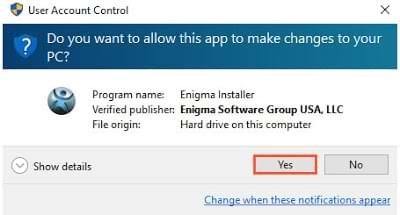
- After installation, you will need to launch the Anti-Malware application. From the welcome screen click on the Start Scan Now button to initiate a new scan of your PC.
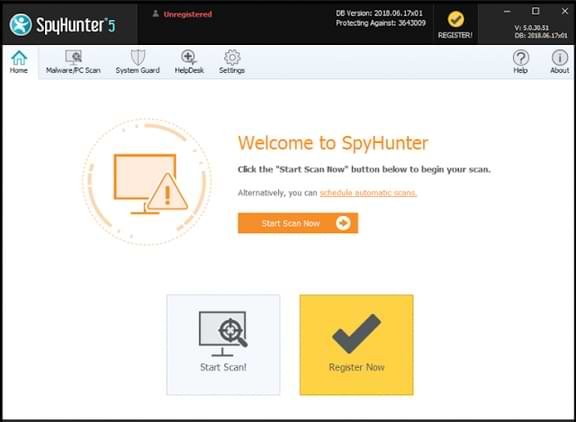
- Once the scanning process begins, it will take some time to run a thorough diagnostic of your PC and find all hidden threats and malware.
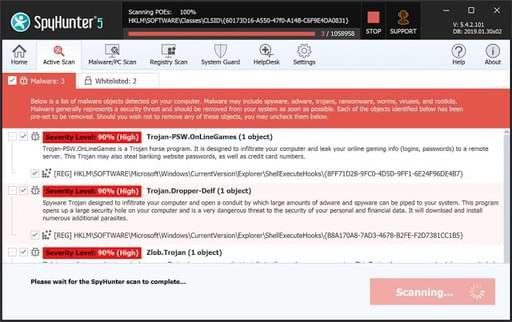
- Soon you will find a complete list of all the threats on your system screen. Then you will need to click on the Next button to delete all the viruses.
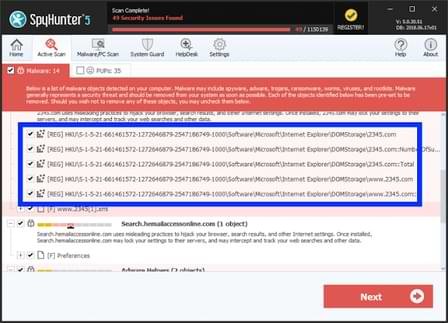
How To Decrypt CrossLock Ransomware Files
As there is no CrossLock Ransomware decryptor available, you will need to use alternate options to restore your files. The first one is to use the backup. If you have created a backup of your important files then it is going to be quite easy. However, if you don’t have any backup files or they also got encrypted by the virus then you will have to try a data recovery software.
We recommend using Stellar Data Recovery software because it is a powerful and trusted data recovery software. Paying ransom money is not ideal because it will only motivate hackers to carry out more attacks. You can wait for any free decryptor to be launched but it can take forever. Download the free trial version of data recovery and scan your PC for files. It may be able to recover some of your files and save you lots of money.
- Click on the below download button to get started instantly with the data recovery process on your PC.
Download Data Recovery Software Now
- After the download click on the installer file and complete the software installation. Then launch the application and select the Data type to recover, and click the Next button.

- After the selection of data, you will need to select the location from where you want to recover data. Choose the location and then click on the Scan button.
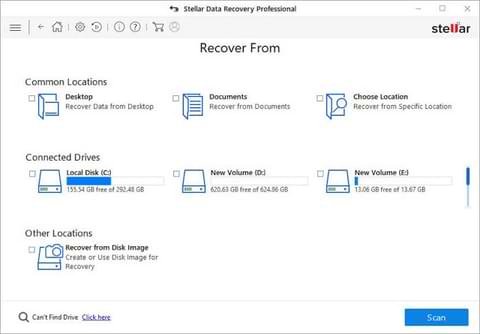
- The software will take some time to scan your system. You will see a list of all the files that can be recovered. You can preview them or click on the Recover button to save them.
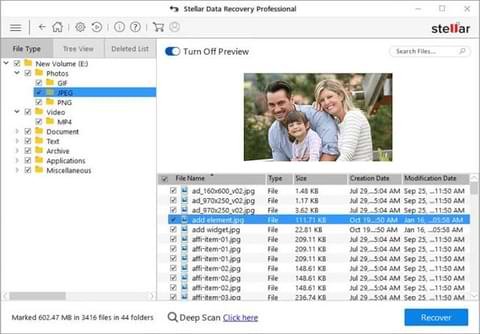
Manual CrossLock Ransomware Removal Guide
Attention! For the safety of your system, please confirm a few things before you begin manual removal:
- You have done this before, which means you have experience in removing the virus manually;
- That you know your way around PC and all necessary processes and applications;
- You know about Registry entry and the Serious repercussions of any mistake;
- Make sure you can reverse any mistake made during virus removal.
If you don’t attain any of the above standards, then manual removal could be a very risky idea. It is most likely best for you to use the SpyHunter 5 Anti-Malware which is totally secure and efficient method.
SpyHunter 5 Anti-Malware offers a 7-day fully-functional Free Trial. Credit card required, NO charge upfront. No charge if you cancel up to two business days before the trial period ends. Read SpyHunter 5 Review, and Free SpyHunter Remover details.
Start PC in safe mode with networking
- Click on the Windows and R keys together on your keyboard to open the Windows Run Box.
- Now you will need to type in MSConfig and then click the OK button.
- The System configuration settings box will appear on your computer screen.
- Click on the Boot tab, check the Safe Boot option, and select the network box,
- Finally, you will have to click on Apply and then press the OK button.
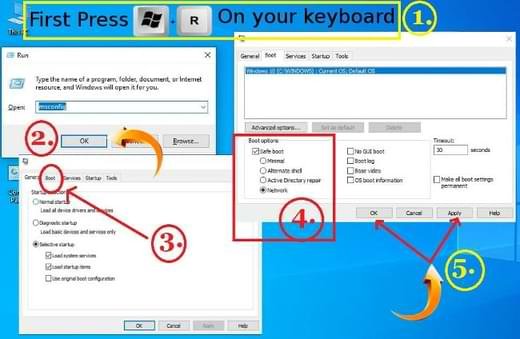
Kill Malicious Process From Task Manager
- Open the Windows Rub box again on your PC by pressing the Windows and R keys together on your keyboard.
- This time you will have to type in taskmgr and then click the OK button to open Windows Task Manager. Look for any unknown or malicious running on your system.
- Select the process which is taking lots of systems resources and then click on the End Task button.
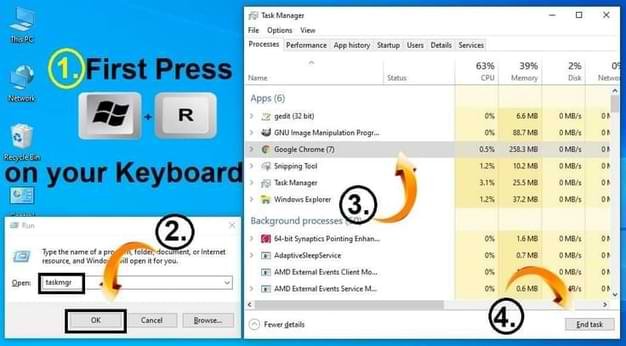
Uninstall CrossLock Ransomware from Control Panel
- Again you will need to open the Windows Run Box, so press the Windows and R keys together.
- This time you need to open the Windows Control Panel, so type in appwiz.cpl and then click the OK button.
- Programs and Features windows will appear on your computer screen with a list of all the installed applications.
- Now you need to look for any unknown or virus related program and then Uninstall it from your PC.
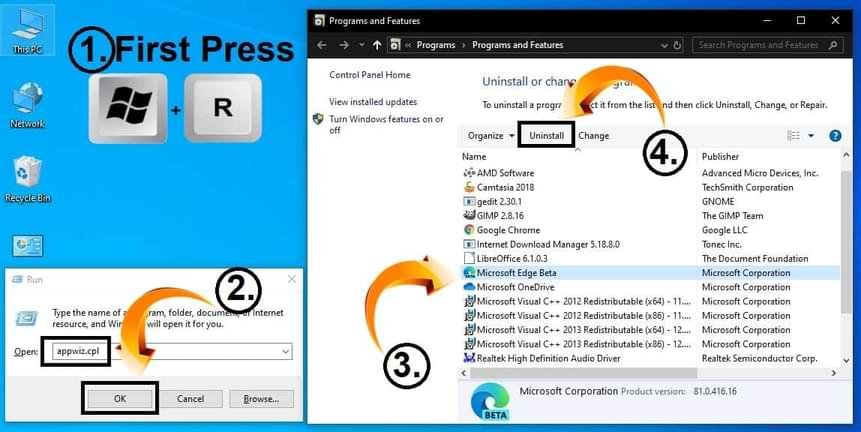
Remove CrossLock Ransomware From Registry Editor
- Again open the Windows Run Box on your PC by using the Windows and R keys.
- To open the Windows Registry Editor, type in Regedit and click the OK button.
- Now you will have to find the virus related registry files and remove them.
- Press CTRL and F keys together on the keyboard to start a Find query.
- Type the virus name and click on Find Next button to find malicious entries and delete them.
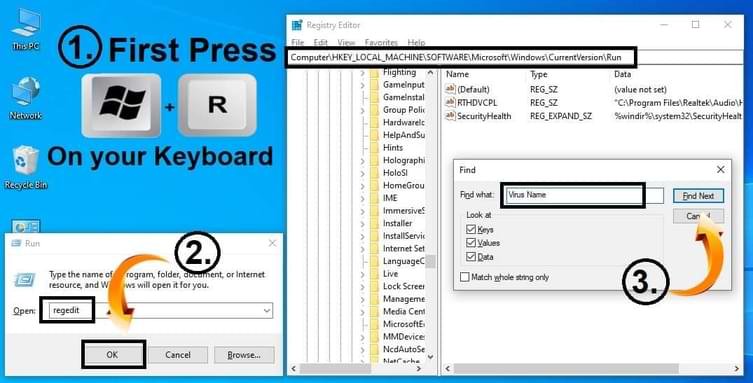
Warning: Meddling with Windows Registry files might not be a good idea if you don’t have advanced knowledge about registry files. Deleting the wrong file can break down your entire system. Proceed at your own risk, or just skip this step. You can choose the Automatic Removal method and avoid all the problems.
SpyHunter 5 Anti-Malware offers a 7-day fully-functional Free Trial. Credit card required, NO charge upfront. No charge if you cancel up to two business days before the trial period ends. Read SpyHunter 5 Review, and Free SpyHunter Remover details.
Remove Malicious IP addresses from Windows Hosts Files
- To open the Windows hosts file, simply press the Windows and R keys together on the keyboard.
- Type C:\Windows\System32\drivers\etc in Run Box and then click the OK button.
- Now you will need to access the Windows hosts file using Notepad.
- Most threats add malicious IP addresses here to automatically connect to remote servers.
- Delete all the malicious IP addresses below the localhost and save the file.
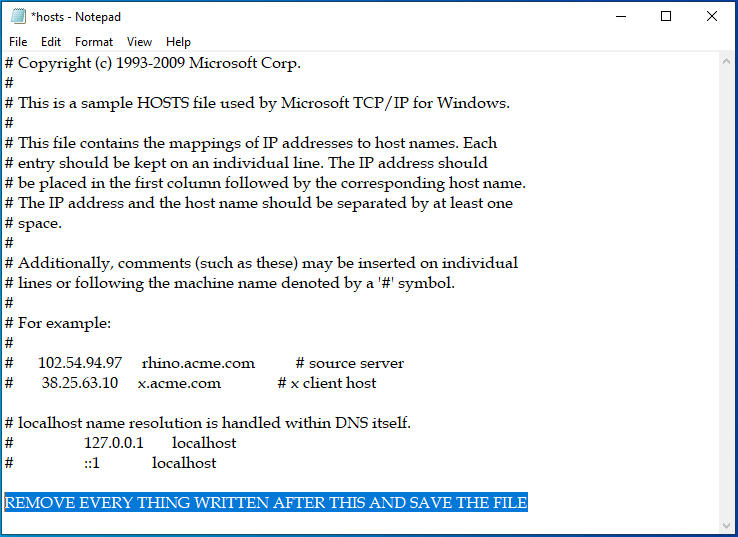
Delete Virus related files from your PC
When malware infects your system, it normally creates several malicious files and spread them at different locations. After you remove the malware, these leftover files help them to get back to your computer. Remove all virus related files at once by following the below instruction :
- Open the Windows Run Box again by using the Windows and R keys together.
- Now you will open the below paths one by one using the Run Box and remove malicious files.
- %AppData%
- %LocalAppData%
- %ProgramData%
- %WinDir%
- %Temp%
For the first four options, look for any recent folder related to the CrossLock Ransomware and remove them. For the Temp folder, you can delete all the files at once. Use Ctrl, Shift, and Delete keys together for permanent removal.
Remove CrossLock Ransomware via system restore
- You will again need the Windows Run Box, so press the Windows and R keys together.
- Open the Command Prompt by typing in cmd and then clicking the OK button.
- Type cd restore and press Enter, then type rstrui.exe and press Enter.
- The System Restore window will get opened instantly then click on the Next button.
- Choose a System Restore point you have created in the past and click the Next button.
- Finally, when you will hit the Yes button, the system restoration process with start immediately.

Note: System restore to remove a virus will only work if you have a restore point set on your PC. Otherwise, no changes will be made to your system and it will not remove any threats. Be advised, restoring the computer to a previous version does not always guarantee virus removal. Most viruses delete restore points, so don’t get disappointed if this trick does not work for you.
Prevent CrossLock Ransomware in Future
- Get a powerful Anti-Malware or Anti-virus to fight cyber threats. Free versions do not offer the best protection and cracked security programs can do more damage than good.
- Always keep your Windows firewall active, and your OS updated along with other important programs. Only download updates from official sites or reliable sources.
- Check HTTPS before entering your email, password, credit card details, etc. to any site. Do not visit sites that do not have SSL security. Also, don’t forget to Enable Phishing and Malware protection in Browser.
- Do not download or install any type of pirated software, games, or illegal patches. Avoid using shady sites to acquire freeware programs because they often use software bundling. Never install a program that asks you to inactivate your anti-virus software.
- Avoid opening spam emails from unknown senders. Always scan all the email attachments before opening them. Never click on any suspicious links with some too good to be true offers.
- Connecting your PC or mobile devices to unsafe public Wi-Fi is not a good idea. You can also avoid unwanted threats coming from malicious sites by using a VPN to spoof your connection.
- Keep regular backups of all your important data on external hard drives or cloud drives to avoid data loss in case of a ransomware attack. Also, create a system restore point on your system for security purposes.

Leave a Comment